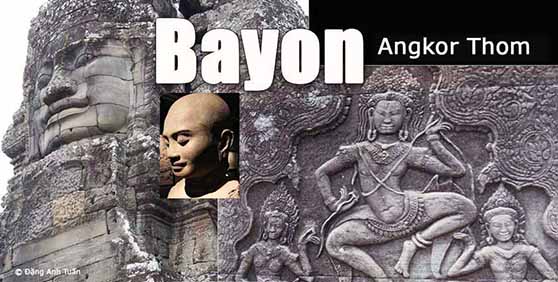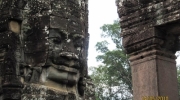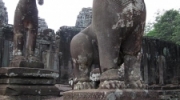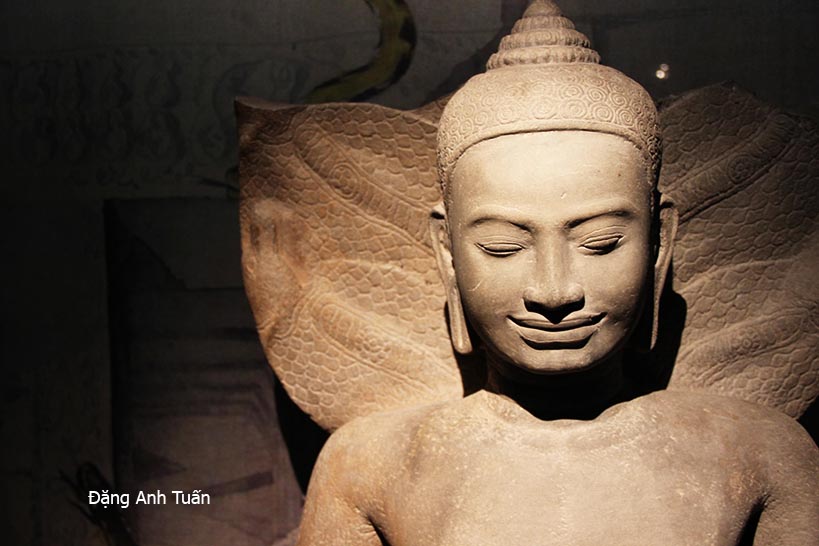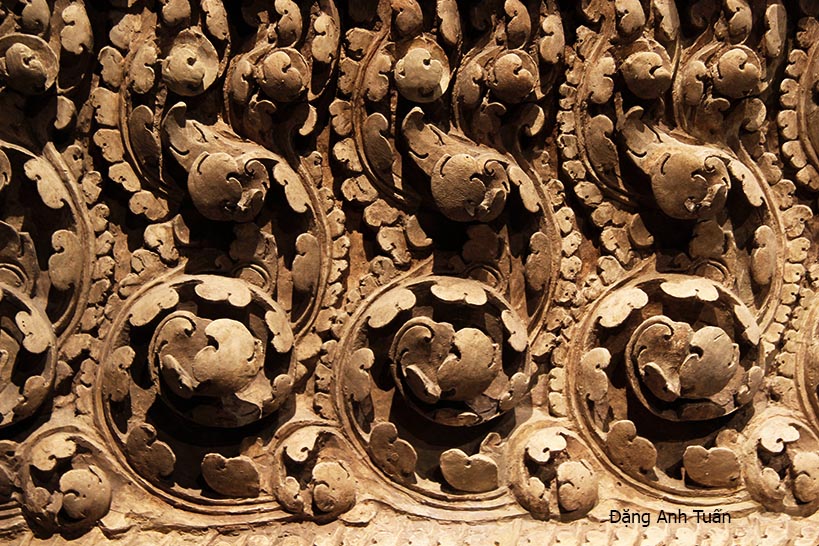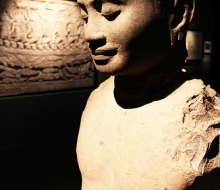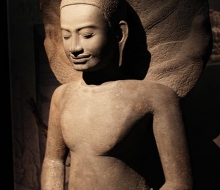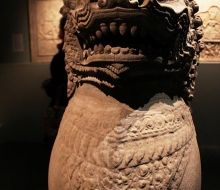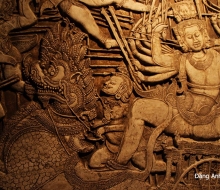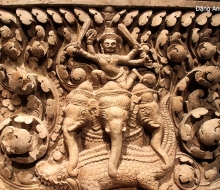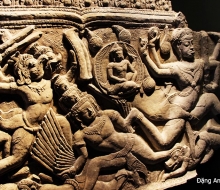Bayon is the central temple of the old city Angkor Thom, capital of Khmer sovereigns at the beginning of the XIIIth century. It is the last one of temples-mountains built by king Jayavarman VII, restorer of royal power of the Khmer Angkor kingdom after the invasion of the Cham. Its decoration of a exceptional wealth is at the apogee of Mahayana Buddhist art.
This king dedicates this monument to Buddha he spreads the doctrine of which with his face towers. There are over 37 harmonious towers around a big central tower, the sanctuary. But we think that they could be more numerous, perhaps 54 towers with 216 faces according to French Paul Mus.
King Buddha at Guimet museum

These towers are built by putting stony blocks piled on top of the other without any cement. The sculpture will be made after the completion of placement of these rocky blocks.
What mechanical strength did they have, the Cambodians in the past, to raise the enormous stony blocks until higher parts of the building after having extracted them from the distant mountains, having polished and sculptured them? It is this question which haunted frequently Henri Mouhot during the discovery of Angkor ruins. We find on four sides of each tower, gigantic faces in the enigmatic smile, each one of them turned respectively to one of the four cardinal points.
The visitor has the impression to be followed by their glaucous look. For Pierre Loti, Bayon was the heaviest stony mountain the men dared to undertake since the pyramids of Memphis.
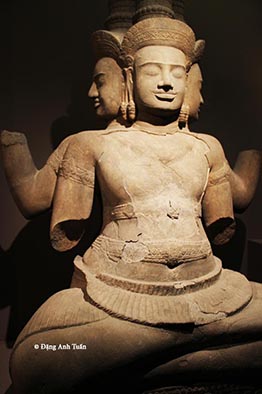
In his work entitled « Travel in the kingdoms of Siam, Cambodia, Laos and other central parts of Indochina « , the discoverer of the Angkor ruins, Henri Mouhot, left his impression: In spite of the disappearance of the gold and colors which almost totally removed from the building, there are only stones there. But these ones proclaim loudly the genius, the strength and the patience, the talent, the wealth and the power of the Cambodians in the past.
We discovered recently during a excavation realized in 1933, in the broken remains of a big stony statue 3,60 m in height, the representation of Jayavarman VII in king Buddha. The builder of the Bayon, is seated, legs tucked on the coiled body of the naga. Since then, we attributed this face with the mystic smile found on the sides of the Bayon towers to that of Jayavarman VII.

